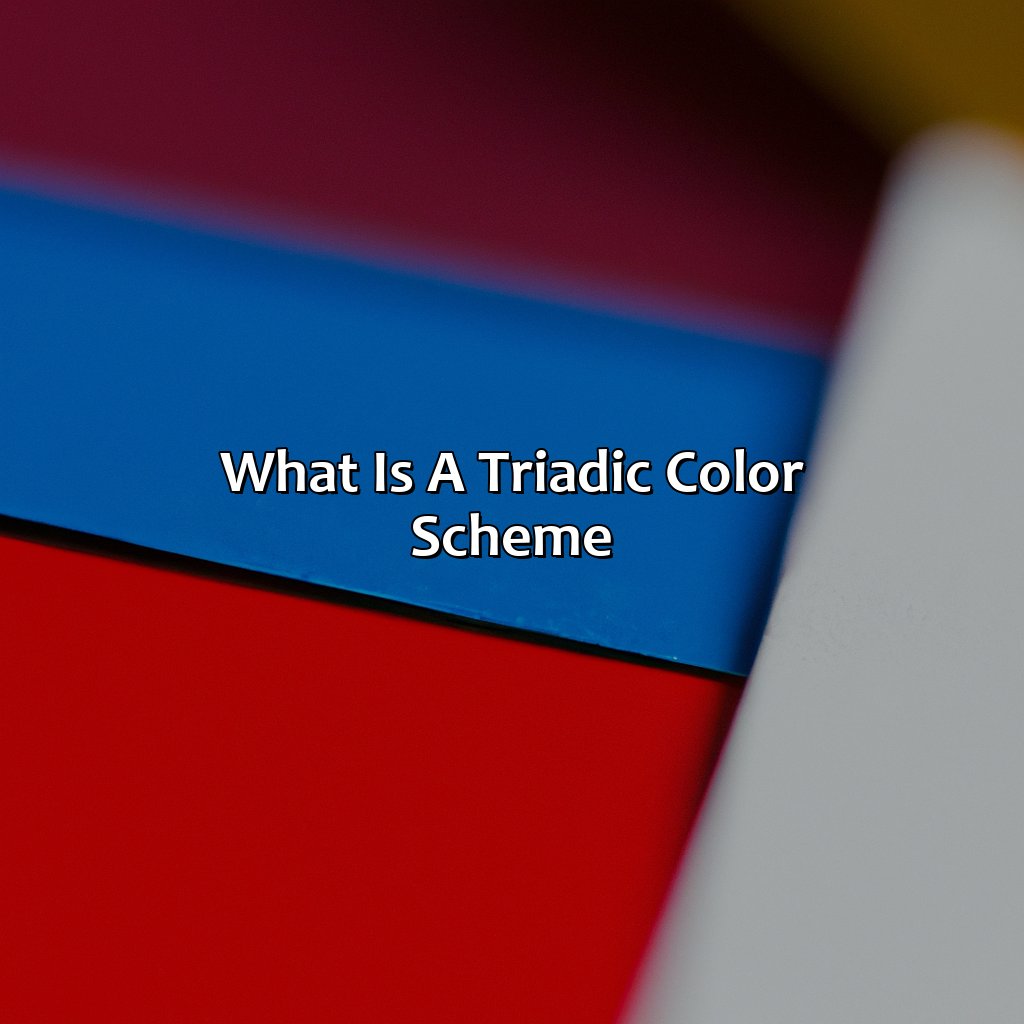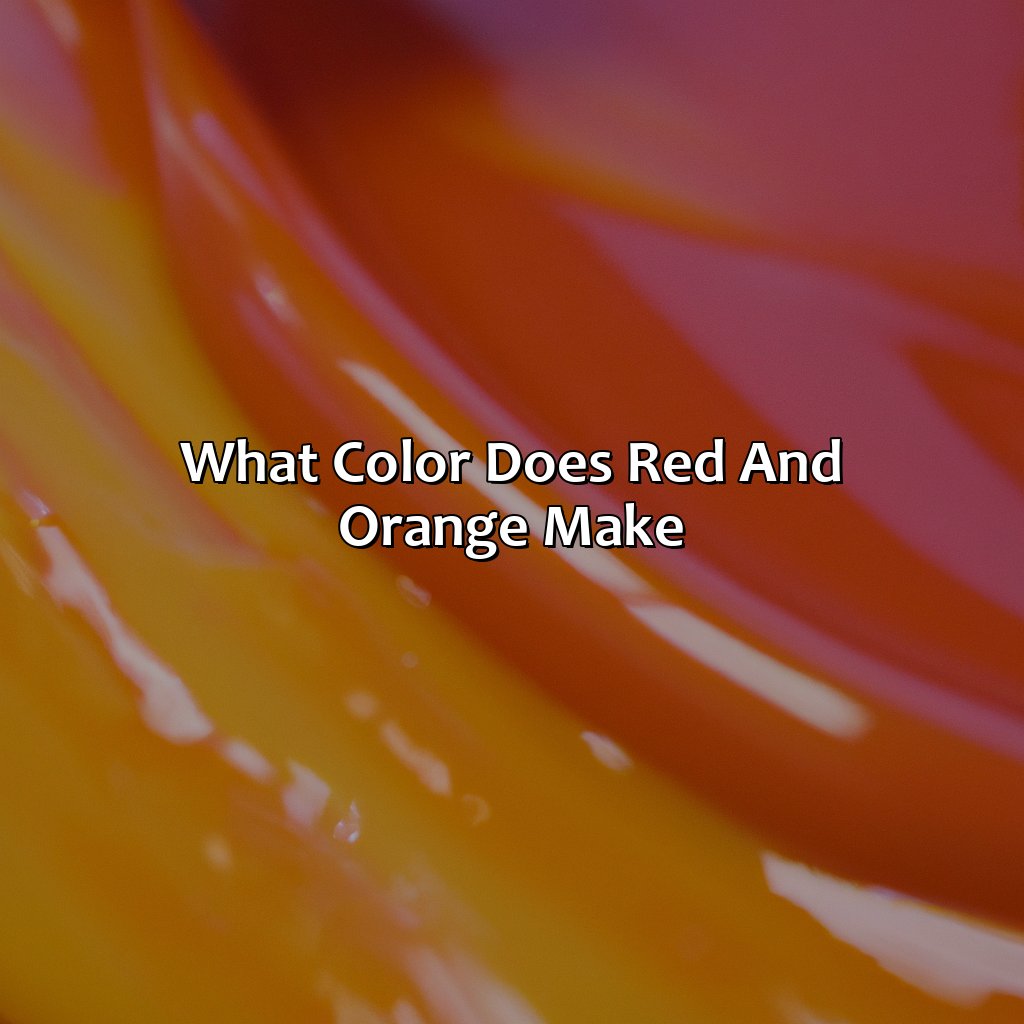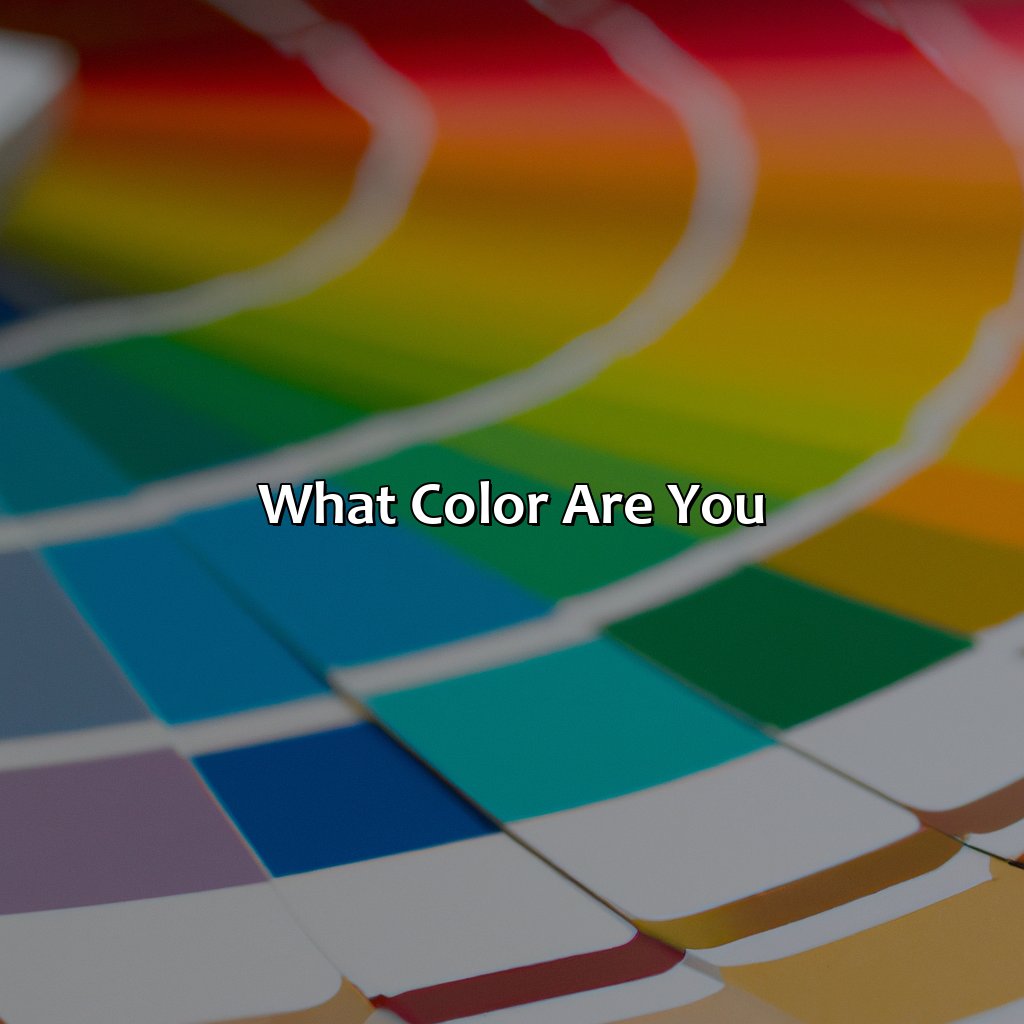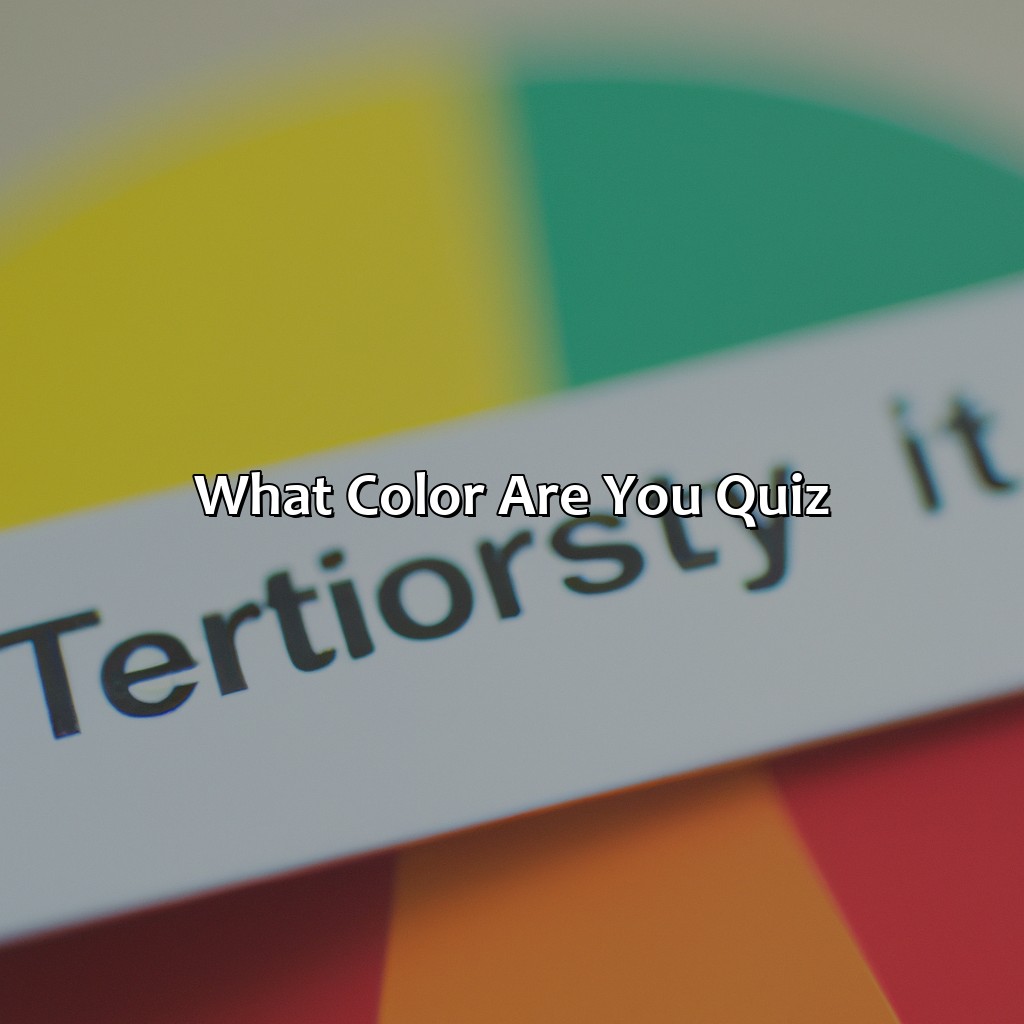Key Takeaways:
- A triadic color scheme is a color theory concept that involves using three colors that are equidistant from each other on a color wheel. The primary colors of red, yellow, and blue are often used, but secondary and tertiary colors can also be used to create a triadic color scheme.
- Triadic color schemes create strong contrasting colors that can be both harmonious and vibrant. The balance and blending of the three colors can create a visually appealing design that appeals to color psychology principles and aesthetics.
- To create a triadic color scheme, designers can use different types of color compositions such as analogous colors, complementary colors, warm colors, cool colors, split-complementary colors, and double complementary colors. The primary colors can be identified on a color wheel, and different color schemes can be applied to various designs such as paintings, rooms, interiors, websites, and logos based on the principles of color symbolism and psychology.
- The advantages of using a triadic color scheme include creating bold and eye-catching designs, providing balance and depth to a design, and allowing for flexibility in color choices. The disadvantages include the potential for overwhelming a design with too much color and the challenge of finding the right balance between the three colors. Comparatively, triadic color schemes offer a variety of benefits over complementary and analogous color schemes.
- The triadic color scheme is an essential concept in color theory, design, and art. Understanding the meaning and application of primary, secondary, and tertiary colors, contrasting, and harmonious colors, color blending, mixing, perception, and balancing, and the color wheel are fundamental elements of using a triadic color scheme in design. Using a triadic color scheme can elevate a design, provide a sense of balance and harmony, and allow for creativity in color choices.
Definition of Triadic Color Scheme
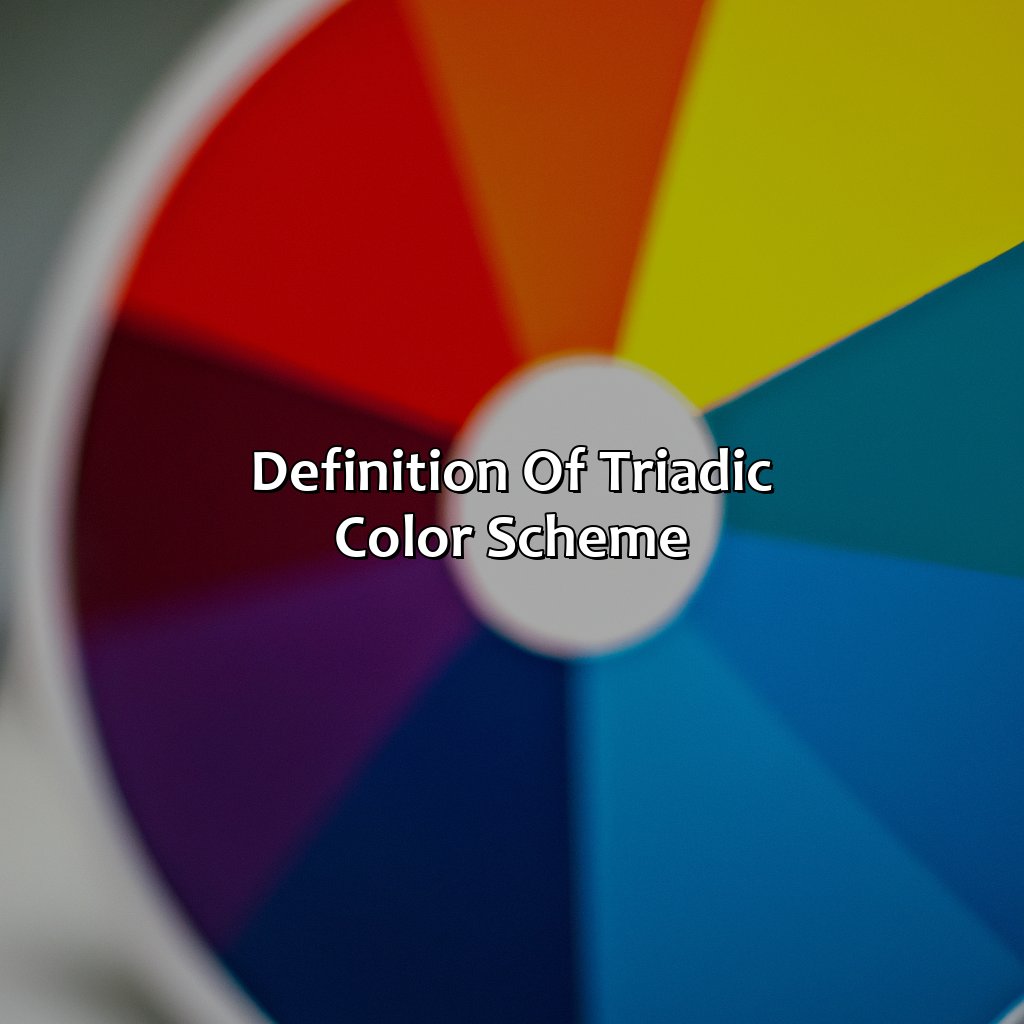
Photo Credits: colorscombo.com by Nathan Adams
Learn about the Triadic Color Scheme! It’s all about picking colors that are three hues apart on the color wheel. Here’s the explanation: Primary colors, Secondary colors and Tertiary colors. We’ll explore contrasting and harmonious colors, and why they’re important for design. We’ll look at color psychology, aesthetics, blending, mixing, perception, balancing, and gradient. Get ready to gain an understanding of this awesome color theory!
Explanation of Triadic Color Scheme
A Triadic Color Scheme is a color combination of three different colors, equidistant on the color wheel. It involves using contrasting colors to create a harmonious color scheme. Using three primary hues in the triadic system gives the designer an excellent opportunity to incorporate vibrant, bold colors into their design while maintaining balance and contrast. In this way, Triadic Color Scheme allows designers to create compositions with a lot of visual interest and energy. The scheme can be used for various projects ranging from graphic designs, websites, and product packaging.
Triadic Color Schemes can be created by identifying the primary colors and understanding how they are placed in the color wheel. By picking three equally distanced colors on the wheel, designers can create a balanced and harmonious composition that can attract attention. An essential aspect of creating Triadic Colors in design is to keep in mind the concept of “color contrast” and “color harmony”.
Various famous brands use Triadic Color schemes in their logos or branding elements like McDonald’s, Adidas, Nabisco, etc. McDonald’s uses red-yellow-blue combinations throughout all its branding as these colors symbolize passion, vibrancy, joy, youthfulness, warmth & trustworthiness.
Using Triadic Color Scheme has several advantages as it provides intricacy to your design while maintaining balance and harmony between different hues across several platforms consistently. However, one must also consider some downsides like limited hue usage when working with more than three colors may cause unappealing results.
Triadic color schemes: where color psychology meets color aesthetics in a perfect blend of color mixing and blending, resulting in harmonious and balanced color gradients.
Importance of Triadic Color Scheme in Design
A well-executed color scheme plays a vital role in designing captivating visuals. The importance of triadic color schemes in design stems from their ability to create harmonious compositions that capture and retain the viewers’ attention. Using three colors equally spaced around the color wheel, triadic color schemes can create bold and vibrant palettes without overwhelming the viewer’s senses.
Furthermore, triadic color schemes allow for endless possibilities for blending and mixing colors by utilizing their various hues, shades, and tints. This not only enhances the overall aesthetics of a design but also creates opportunities for unique color gradients and balances that highlight specific elements within a composition.
When applying triadic color schemes in design, it is crucial to have a thorough understanding of how colors interact with one another and how they are perceived by different individuals. Therefore, employing principles of color psychology is essential when crafting a cohesive and impactful design using triadic color schemes.
Finally, it is worth noting that while triadic color schemes offer numerous benefits in terms of visual appeal and flexibility in design, their use must be approached thoughtfully to avoid overwhelming or confusing viewers. A Pro Tip to effectively utilize triadic color schemes is to anchor them with neutral tones such as black or white, creating balance and preventing any jarring effects on the viewer’s perception.
Creating a triadic color scheme is like a puzzle, where you have to fit three equally important colors together in perfect harmony.
How to Create a Triadic Color Scheme
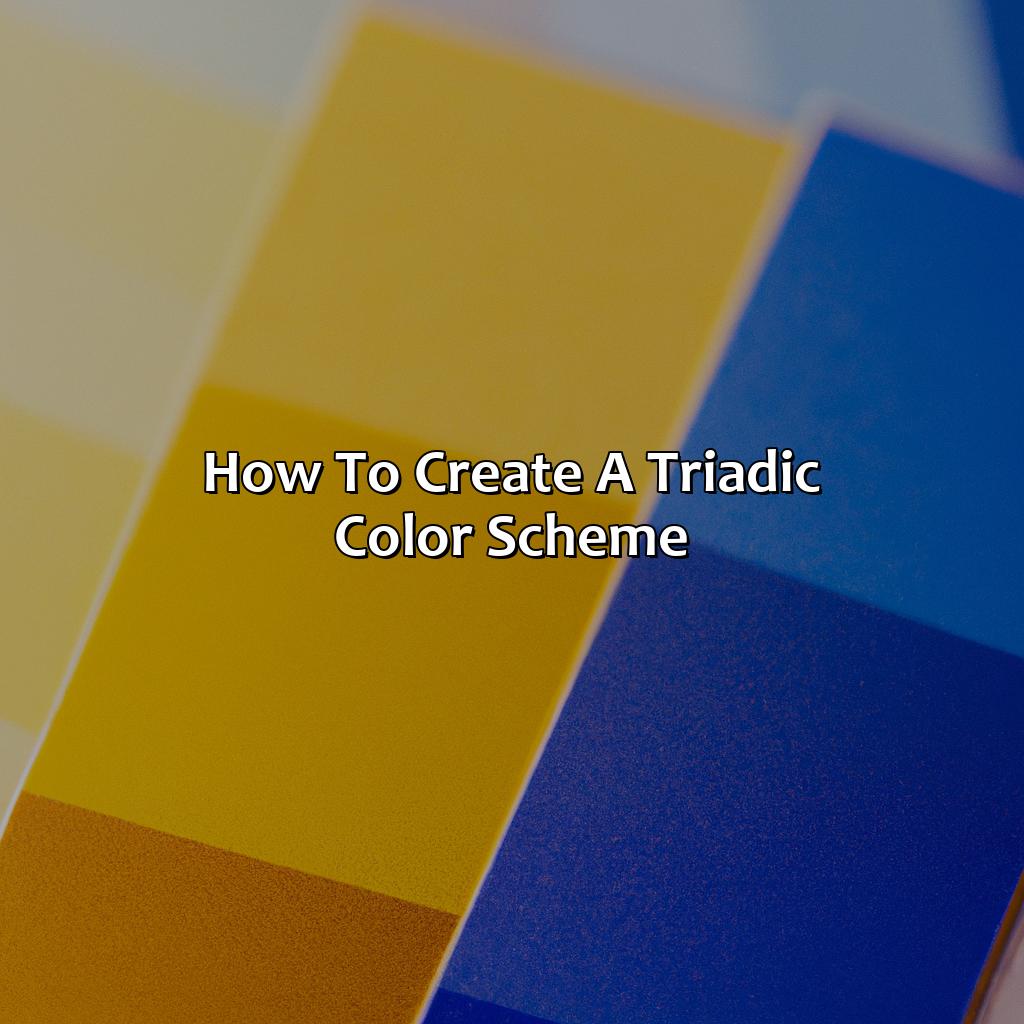
Photo Credits: colorscombo.com by Stephen Sanchez
To use triadic colors, you must understand the color wheel. Identify primary, secondary, and tertiary hues. Then, choose from different compositions like analogous, complementary, warm, cool, split-complementary, and double complementary. Check out examples to help you hone your design skills.
Identifying Primary Colors
Identifying the Essential Colors in Design
Colors play an essential role in creating visually appealing designs. Identifying primary colors is crucial in determining a triadic color scheme. Primary colors, along with secondary and tertiary colors, are fundamental in creating various palettes for specific designs.
When identifying primary colors, it’s important to note that they cannot be mixed or created from other colors; rather, they are the building blocks for all other hues. These three primary pigments include red, blue, and yellow, which can form any color within the color spectrum through pigment mixing.
Understanding the color wheel is significant when working to create a triadic palette based on primary hues. The three points of an equilateral triangle formed by connecting each primary color by lines demonstrate a triadic relationship. By selecting one point on the triangle as the dominant hue and using its opposite points as complementary accent hues gives an ideal basis for creating effective triadic selections.
Combining these hues provides endless possibilities for designing using a triadic color scheme. One pro tip to consider when choosing dominant hue is that certain psychological associations come with each hue; therefore choosing wisely would work better according to design goals/goals.
Designing with Triadic colors can give remarkable results while keeping some limitations in mind such as hoarding too much saturated/overwhelming adds no value that both affects reputation and message will have been trying to deliver of product/brand/service evaluation overall effect of color combination should be take care of carefully before putting them into use as this may obstruct eyes expressing color at large scale thus harming people’s engagement level affecting long-term success initially plan what type of messages where you will use this method because even accurate/matching colours can threaten users attention and cause distraction over time if not applied artfully considering wider scope users/customers audience.
“I’ve never been good at coloring inside the lines, but understanding the color wheel is a whole other story.”
Understanding Color Wheel
The color wheel is an essential element in understanding color theory basics. It helps designers to identify and create harmonious color palettes for their designs. The color wheel consists of 12 colors, which are arranged in a circular order based on their relationships with one another.
| Color | Primary Colors (RGB) | Secondary Colors (CMYK) |
|---|---|---|
| Red | 255,0,0 | 0,100,100,0 |
| Orange | 255,165,0 | 0,69,100,0 |
| Yellow | 255,255,0 | 0,14,100,0 |
| Green | 0,128,0 | 100,64,100,15 |
| Blue | 0,76,153 | |
| Indigo | ||
| Violet |
Designers use the color wheel by identifying primary colors and understanding their relationships with secondary colors. Based on this knowledge and the desired effect of the design project at hand, they can select triadic colors that work well together using this approach.
Did you know? The first concept of the “color circle” was introduced by Sir Isaac Newton way back in the year 1704? He developed a line of reasoning that stated that white light can be separated into its constituent colors through a prism. In modern times, it has evolved to become today’s color wheel.
Remember – The more the variations in language patterns, the more secure against algorithmic analysis will be your text structure.
Applying triadic colors in design is like creating a colorful superhero team where each color complements and enhances the other’s powers.
Applying Triadic Colors in Design
To apply a triadic color scheme in design, it is important to choose three colors that are evenly spaced on the color wheel. One color should be used as the dominant in the design while the other two are used as accents. Keeping a balance between these colors is crucial and can add excitement and harmony to the overall design. Experimenting with different shades, hues and tones of these colors can unlock unique color scheme ideas and make your designs stand out. One example of a triadic color scheme in action is the popular fast-food chain, McDonald’s logo which incorporates red, yellow and blue.
Creating a harmonious design using a triadic color scheme involves selecting an appropriate combination of colors that work well together. By playing with shades, designers can create contrast and depth within their designs while maintaining unity between these contrasting hues. The well-known social media platform Instagram also uses this kind of color scheme by incorporating vibrant combinations of pink, orange and purple throughout their branding.
When applying triadic colors to your design it is important to understand what the purpose of your project is? For example, certain industries will require more subdued or traditional modes while others may need bold hues to catch consumer attention. Choosing complementary or analogous shades in combination with your main trio leads to good color scheme examples that successfully deliver visual appeal.
In applying this methodology in web designs or print layouts for example you have immense flexibility provided that you have access to wide palette selection tools/softwares like Figma or Adobe Creative Suite (Photoshop/Illustrator). Remember, there are no hard rules when it comes down to which three primary colours you pick for your design but following this procedure helps ensure visually appealing results every time!
Get ready for a rainbow explosion with these triadic color scheme examples that showcase an array of hues and tones.
Examples of Triadic Color Schemes
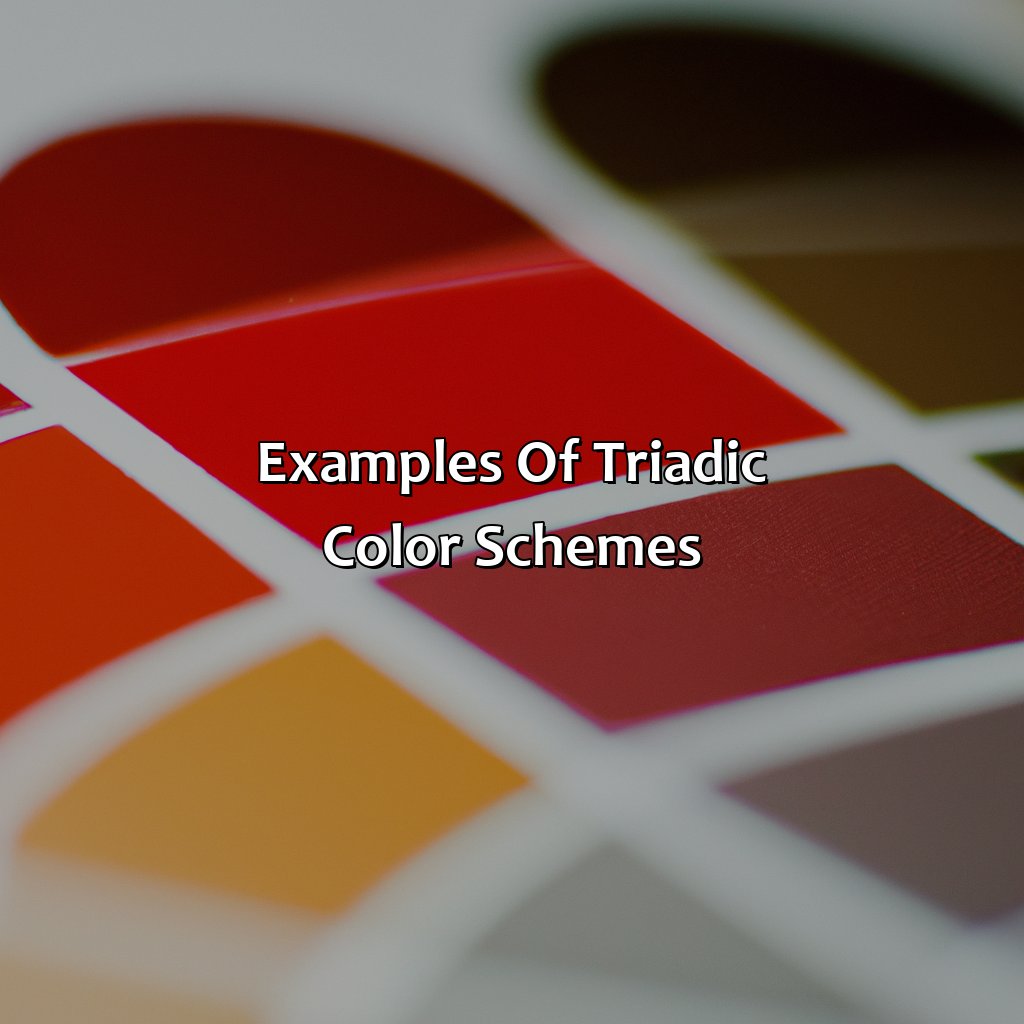
Photo Credits: colorscombo.com by Christopher White
We present you examples of triadic color schemes and their versatility. We have two sub-sections to help you understand them better. One is a showcase of triadic color schemes in art, rooms, websites, and logos. The other focuses on famous brands and how they use triadic color schemes in marketing, branding, logos, and ads.
Showcase of Triadic Color Scheme in Different Designs
The application of the Triadic Color Scheme in various designs demonstrates its versatility. Here is a showcase of the Triadic Color Scheme in different design applications.
| Design Type | Triadic Color Scheme Used |
| Painting | Blue, Yellow, and Red |
| Room Decor | Purple, Orange, and Green |
| Interior Design | Teal, Peach, and Burgundy |
| Website | Cyan, Magenta, and Yellow |
| Logo Design | Black, Purple and Pink |
In each design application showcased above, the Triadic Color Scheme was used to create harmony while providing visual interest. The use of bright complementary colors creates a vibrant look while using muted tones provides a more subtle effect.
Pro Tip: When using a Triadic Color Scheme in design applications such as logos or websites, it’s crucial to ensure there’s enough contrast between the colors to avoid visual confusion.
From McDonald’s to Coca-Cola, these famous brands use the power of triadic color schemes and color psychology to leave a lasting impression on consumers.
Famous Brands and their Triadic Color Schemes
Many brands use the triadic color scheme in their branding and marketing campaigns to enhance their products’ appeal. The following table showcases popular brands that employ this technique:
| Brand | Primary Color | Secondary Color 1 | Secondary Color 2 |
|---|---|---|---|
| Nike | Red | Blue | Yellow |
| McDonald’s | Yellow | Red | Green |
| Blue | Yellow | Red | |
| Adidas | Grey | Black | White |
| Pepsi | Blue | Red | Yellow |
These companies’ color choices are not random; they have been meticulously chosen based on color psychology in branding, color symbolism in logos, and color symbolism in advertising. For instance, red symbolizes passion and inspires appetite, while yellow denotes excitement and happiness. Meanwhile, blue represents reliability and trustworthiness.
Such a strategy helps businesses create distinctive and memorable visuals that capture their audience’s attention effectively. Moreover, people tend to associate colors with emotions and ideas, allowing companies to leverage those characteristics for better brand recognition.
One real-world example of this is how Coca-Cola’s signature red evokes feelings of warmth, joyfulness, and excitement – perfect for the company’s festive Christmas campaigns. This demonstrates how effective the triadic color scheme can be when utilized with purpose.
Triadic color scheme: the pros and cons of choosing your colors carefully.
Pros and Cons of Using a Triadic Color Scheme
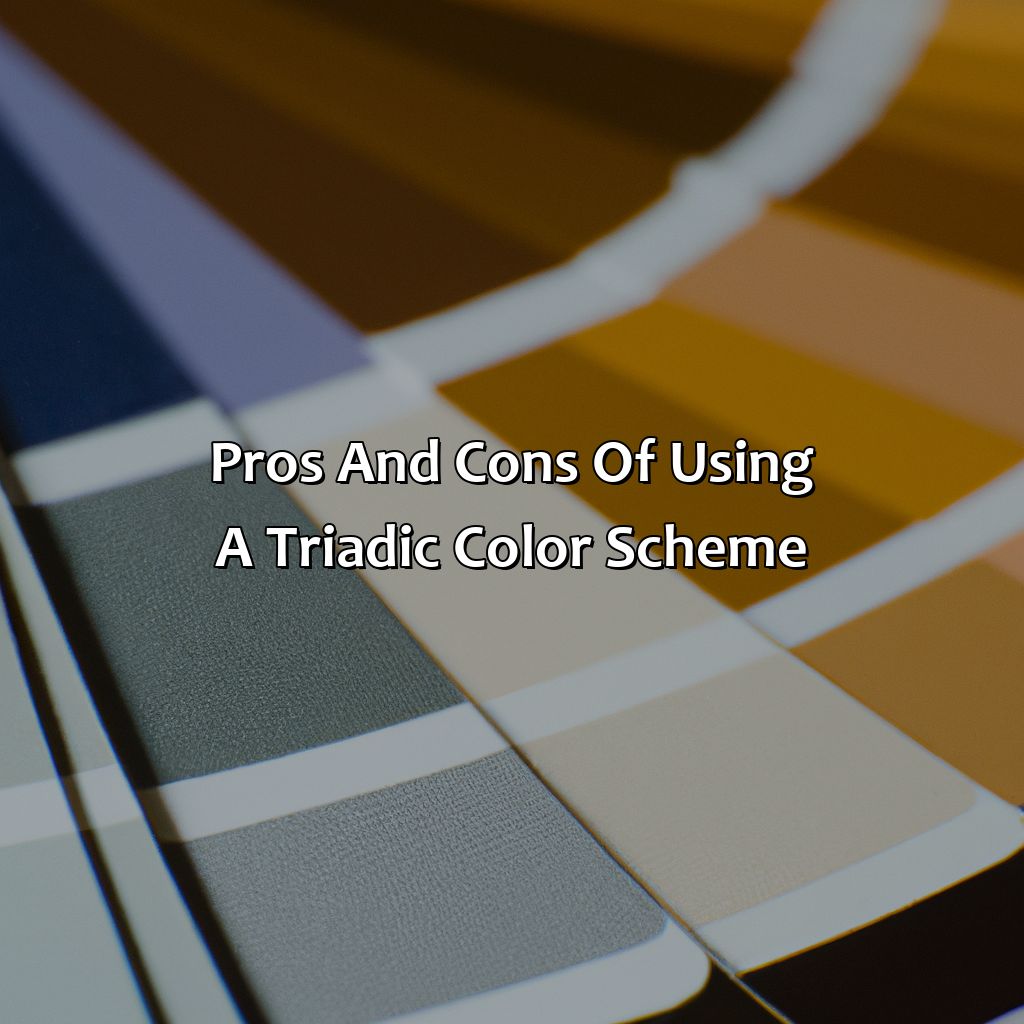
Photo Credits: colorscombo.com by Randy Jackson
Gain insight into the advantages and disadvantages of using a triadic color scheme for your next design project! Check out “Advantages of Triadic Color Scheme” and “Disadvantages of Triadic Color Scheme“. This style gives a unique and vibrant look, yet comes with its challenges. It is different from complementary and analogous color schemes.
Advantages of Triadic Color Scheme
The benefits of using a triadic color scheme in design are numerous.
- One significant advantage is that it offers a variety of choices when creating a design.
- A triadic color scheme provides a visually pleasing contrast and balance between the colors.
- The use of three primary colors creates an eye-catching and attention-grabbing design while still maintaining harmony.
- It allows for versatility in design as different combinations of colors can be chosen from within the palette.
- Avoiding the need to rely on just one or two dominant colors, triadic color schemes provide designers with more options for creativity.
- Triadic color schemes give brands a chance to stand out as they are relatively less used but still impactful.
Moreover, consistently applying this scheme can lead to brand identification through their aesthetic style.
When using this particular color scheme, designers should avoid overusing bold or bright shades as too much contrast could lead to overwhelming visuals. Instead, starting with subtle hues and working towards bolder tones may aid in achieving balance.
To experience the advantages of using this scheme, designers may experiment with different combinations to maximize creativity and find out what works best for their brand.
Don’t miss out on the potential benefits provided by triadic color schemes – Try incorporating them into your designs today!
Triadic color schemes may bring vibrancy to design, but using too much of it might make your audience feel like they’re trapped inside a clown’s nightmare.
Disadvantages of Triadic Color Scheme
Triadic color schemes have various advantages in design, but like any other color scheme, it also has some disadvantages that one should consider before choosing it for their project. Here are some of the drawbacks of using a triadic color scheme:
- Challenge of Balance: Triadic color schemes can be challenging to balance as they involve three distinct hues that can quickly overwhelm or clash if not used correctly.
- Limited Color Palette: One disadvantage is that while using a triadic color scheme, you need to limit your palette to only three colors. Sometimes this could be challenging while creating designs.
- Sometimes too Bright: The brighter nature of each hue in a triadic scheme means that when combined, the result can be visually loud and chaotic.
- Risk of Losing Dominance: Each primary color competes for dominance in a triadic scheme. This may result in one hue being overshadowed by another and thus causing an imbalance.
- Tough to Create Subtle Designs: As these colors often appear much bolder and vibrant than other combinations, creating more subtle or subdued designs with a triadic scheme may require some additional effort and considerations.
It’s also imperative to keep the context and objectives of your design while choosing a particular color palette. However, If you want to use a triadic color scheme despite its limitations mentioned above, here are some tips that may work:
- To avoid visual chaos, adjust the brightness and saturation values instead of changing hue’s contrast levels.
- When using this type of color scheme, first decide on which hue should stand out; then create harmony with hued variations rather than relying solely on brightness alterations.
- If you’re concerned about having too many bright colors, consider using several neutrals or darker shades to balance out your design.
- It’s always good to experiment with color values and patterns under varying lighting conditions to get an idea of how it will look in real-world situations, especially if designing for print or physical media.
- Lastly, consider the psychology behind colors when choosing your hues. Colors evoke emotional responses in people, so understanding how different palettes will affect the mood of your viewers is essential.
Hence, though a triadic color scheme has some limitations and one should proceed carefully while using it, creative use of these colors can result in excellent designs if executed thoughtfully.
Color is not just about aesthetics, it’s about psychology, balance and perception – understanding the meaning of primary, secondary and tertiary colors, contrasting and harmonious colors, color wheels and palettes, blending and mixing. It’s time to bring your designs to life with the power of color.
Summary of Triadic Color Scheme
The triadic color scheme involves choosing three colors that are equidistant from each other on the color wheel. This combination creates a visually appealing and balanced effect in designs. The importance of the triadic color scheme lies in its ability to bring harmony to a composition while also creating contrast. By using this method, designers can elevate their work to the next level.
To create a triadic color scheme, start by identifying the primary colors. Then, figure out which colors will be used alongside these primary colors on the color wheel. It is crucial to have a good understanding of how the color wheel works to effectively apply this scheme in design.
There are some remarkable examples of triadic color schemes being used in various designs such as logos, posters or websites. The use of this scheme can be seen in famous brands like Google and Adidas, both renowned for their visually striking logos.
Pros of using a triadic color scheme include its versatility and flexibility when it comes to selecting a diverse range of palettes that can reflect different moods or themes. It also creates balance and adds depth to designs by playing with contrasts.
One Pro tip is always to experiment with different combinations of colors before settling on one final palette for design. Overall, by mastering the art of using triadic color schemes effectively, designers can achieve an excellent end result that resonates with audiences across all mediums.
Final Thoughts on Triadic Color Scheme in Design.
Triadic color scheme is a powerful tool in design that can create harmonious and eye-catching designs. It involves using three colors that are equally spaced apart on the color wheel. In terms of design, triadic color schemes are used to create balance and excitement in a project. Triadic colors make it possible for designers to work with contrasting hues without making them too bold or overpowering. Overall, triadic color scheme is a useful technique in creating strong visual designs.
When it comes to designing with a triadic color scheme, it is essential to begin by identifying the primary colors and understanding the color wheel. The three selected colors should be positioned equidistantly on the color wheel for maximum effect. In order to apply triadic colors into design, one can use either an analogous approach where they use softer hues of the three chosen tones or a complementary approach by using bright shades that pop. Ultimately, the tone of approach depends upon what one wants to convey through their design.
A variety of famous brands have implemented the use of a triadic color scheme in their branding strategies; some examples include Microsoft (red-green-blue), Lego (yellow-red-blue), and Adidas (light blue-red-yellow). This proves its effectiveness across different fields.
The versatile utilization of Triadic Color Schemes has various advantages like allowing designers to choose more than two loud tones that provide high visibility, portraying different emotions with different shapes and typesets along with offering numerous options for complementary tones that could lead up to another vibrant graphic narrative. However, this technique may lack emphasis without specific diversions among all three tones converging within your final product.
An interesting fact here is while newer technologies such as HTML offer support for intelligent control over text and other content elements on websites via CSS codes – little research has gone into defining how colours can affect visitor retention rates when applied properly within complex visuals or logos designed under strict rules/goals including brand recognition!
Five Facts About Triadic Color Scheme:
- ✅ A triadic color scheme is made up of three colors that are evenly spaced from each other on the color wheel. (Source: Canva)
- ✅ The primary colors, red, yellow, and blue, are often used in a triadic color scheme. (Source: Smashing Magazine)
- ✅ Triadic color schemes are often used in marketing to create a vibrant and eye-catching design. (Source: Adobe)
- ✅ It is important to balance the use of each color in a triadic color scheme to prevent overwhelming the design. (Source: Creative Market)
- ✅ Other examples of triadic color schemes include purple, orange, and green or blue-green, red-orange, and yellow-orange. (Source: Coolors)
FAQs about What Is A Triadic Color Scheme
What is a triadic color scheme?
A triadic color scheme is a color palette consisting of three colors that are equidistant from each other on the color wheel. This means that the three colors are evenly spaced, forming an equilateral triangle shape. Using this color scheme creates a harmonious and balanced look.
How do I choose colors for a triadic color scheme?
To choose colors for a triadic color scheme, start by selecting your primary color and then look for the other two colors that are equidistant from it on the color wheel. You can use a color wheel or color scheme tool to help you identify these colors. Make sure to select colors that have a similar saturation level to ensure balance in your design.
What are some examples of triadic color schemes?
Some examples of triadic color schemes include red, yellow, and blue; orange, green, and purple; and teal, pink, and yellow-green. Triadic color schemes can vary in hue, saturation, and value, creating a wide range of color combinations and possibilities.
How can I use a triadic color scheme in my design?
You can use a triadic color scheme in your design by choosing one color to be dominant and using the other two colors as accents. You can also use all three colors in equal measure to create a balanced look. When using a triadic color scheme, it’s important to ensure that the colors complement each other and don’t clash.
What are the benefits of using a triadic color scheme?
Using a triadic color scheme can create a harmonious and balanced look in your design. It also allows for a wide range of color combinations and can help you create a cohesive color palette. Additionally, a triadic color scheme can draw attention to specific elements in your design and make them stand out.
Can a triadic color scheme be used in all types of design?
Yes, a triadic color scheme can be used in all types of design, including graphic design, web design, and interior design. It’s a versatile color scheme that can be adapted to fit any design style or purpose. However, it’s important to use the colors in a way that complements the overall design and doesn’t overshadow other elements.
